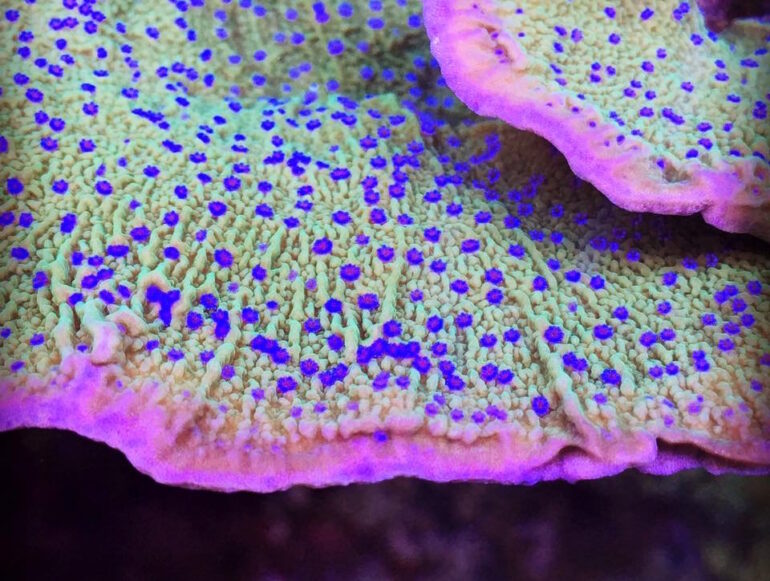During my time in the hobby things have changed dramatically. Most of us started off with soft corals, and these were usually large wild colonies, which is a dramatic difference from the SPS fragments (frags) that many of us now start off our tanks with.
The clearest evidence of this is evident every time I visit a show or frag swap where frags for just about every coral I could possibly want are on display from the various vendors in what look like little blue jewel boxes in front of them. This is a good thing as it is clear evidence that we no longer need to start off with large wild colonies to have a successful tank as we can now fill our tanks fairly quickly, even if we start off with small frags as a result of our incredibly improved husbandry techniques.
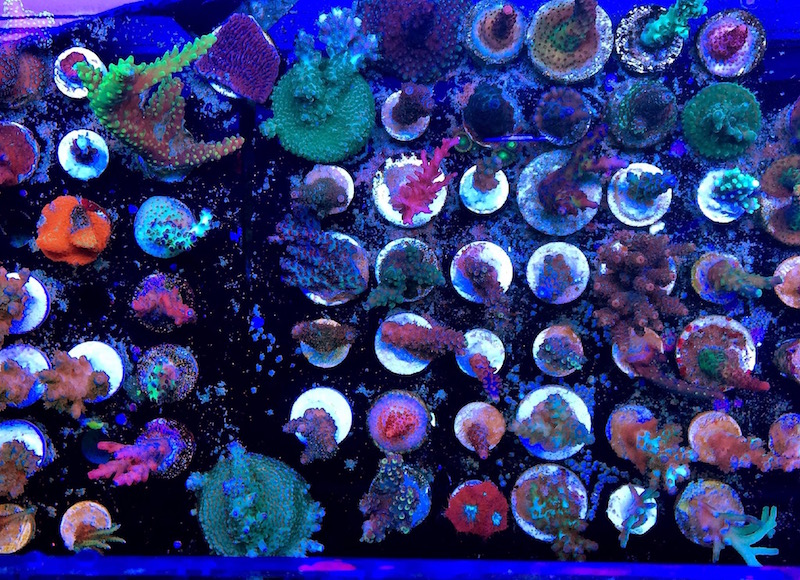
Being a lover of all things coral, or as my kids say a coral hoarder, I have gotten frags from a significant number of vendors. Having just changed jobs, I took it upon myself to finally do a deep cleaning of my office and during that adventure I collected all of the invoices from the various vendors I have gotten frags from over the past few years.
All told there were well over forty vendors I have gotten frags from over that time. As a result of this experience, I am fairly confident that I have a good idea of what a good “frag vendor” does versus ones that are lacking.
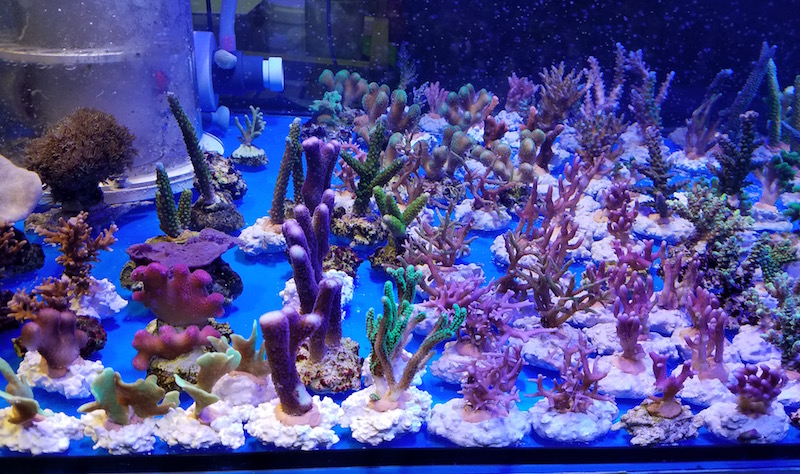
Now before you get all excited and think I am going to name names, both good and bad, I am not, as I am too smart to make enemies at this point in my life. Also to be honest if I did name names and one of these frag farmers got in a coral that I had to have I would be out of luck, so again, no reason for me to name names.
It is my intent in this article, to not only point out the good and bad things that occur in the frag business from a hobbyist’s point of view, but also my hope that the vendors themselves will read this and see what they are doing right and doing wrong so they can correct things thus making things better for everyone. Now I don’t expect this to happen over night, but hopefully this article will at least give you a baseline for what they should do, so when they don’t live up to it you will let them know.

Most people selling and shipping frags do so as a second or small part of their lives and try to do the best they can. So if you make a suggestion on how to improve things I’m sure they would appreciate your letting them know in a nice manner rather than posting online how bad they are. From my own experience things typically work out when a confrontation is avoided so keep this in mind.
So why do we buy frags, when maricultured colonies as well as wild colonies are still available? First and foremost, we buy them because for the most part many of them are unique. Having been around when the main unique colorful corals available were the seemingly random sps or lps shipments that came in from Fiji or Indonesia, being able to get almost any coral I want at a show or online now is still amazing to me.I know that at times we can take this for granted, but there are now more beautiful corals out there than ever before and the majority of them are frags.
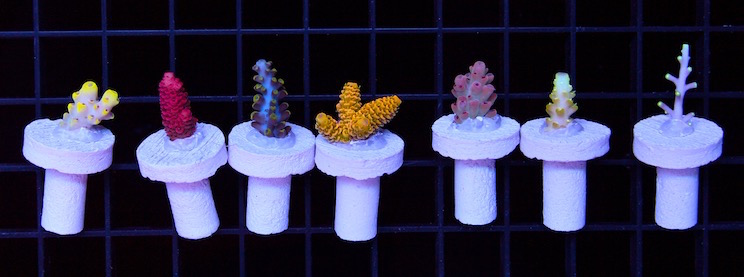
In addition to the beauty of these little jewels there is also the satisfaction one gets when we grow these frags into colonies in our tanks. Fortunately, we can now do this in a relatively short time owing to how advanced coral husbandry has become. So these are just a couple of reasons for why we get frags. And as a result of this, the demand for frags has never been bigger and as a result there are now more people cultivating and selling frags than ever before.
As a result, a lot of these individuals are new to this and therefore do not know the proper or best way to manage this business and take care of their customers. So for the rest of this article I hope to illustrate what I think are the best ways to do this and some of the best ways I have seen these things done.

As I mentioned above one of the biggest reasons we love frags is because of the colorful corals we can now obtain. Unfortunately, some unscrupulous vendors take advantage of this by “augmenting” the colors of the corals they are selling either through photoshop and/or manipulating the lighting.
As a result, some new or unknowledgeable buyers purchase these corals thinking that the colors these corals will show in their tanks will match those of the pictures they see online. In Europe, where the online selling of corals and frags is still in its relative infancy, the use of photoshop or other means for making corals look better is considered bad form and vendors that practice it are called out immediately with their reputations sullied to such a degree that their online business suffers.

Fortunately, there are many great vendors out there whose shipped corals look like the pictures of the corals they sell online. Since most of us buy from vendors who we want to do this, I simply only buy from vendors whose corals match their pictures and I suggest that everyone do the same. I only give vendors one chance to fool me and if I get a shipment that is off in coloration I do not buy from them again.
Having said that, I know that corals can change colors in shipping and that different lights can produce different colors or even that corals can morph in color over time. But when a coral comes in looking significantly different from what I think it should look like, I immediately let the vendor know and that I will be watching to see how it does over time.

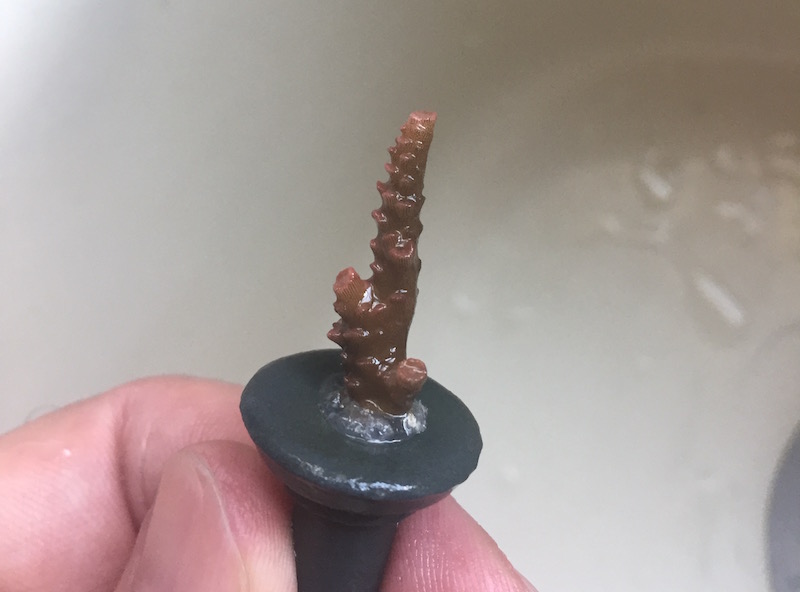
Contacting them to let them know is a good first step towards developing a relationship. In this regard, most when given a chance make things right. But if you give them the chance and the corals do not look like the pictures over time, then simply buy from other vendors. In addition to color sometimes being an issue, the size of the frags now being sold is definitely an issue.
I know that rare corals have a high premium and are very valuable as are their frags. Unfortunately, over time the value of these frags has superseded common sense so now tiny pieces less that ¼” in size are often sold as the common size. As has been demonstrated in several trials and in my own experiments, when frags are taken less than ½” the mortality rate is 2 to 5 times greater than when the frags are ¾-1” in size.
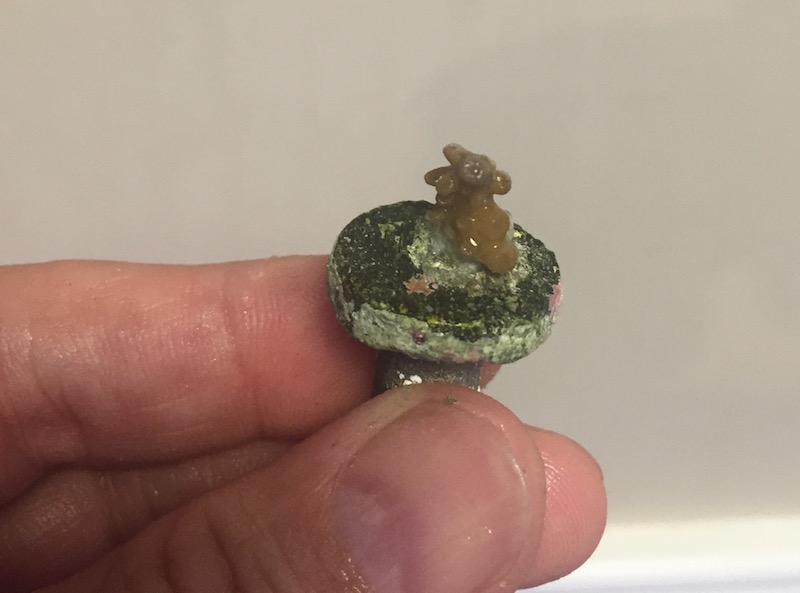
As a funny side note, now frags that are much bigger than that are often called and sold as “mini-colonies”. So I’m guessing that now a full sized coral colony is considered 2” in size? In addition to having a high mortality, small sized frags also take significantly longer to grow into something even closely resembling a colony than do larger frags.
So as with color, I strongly suggest that if the only frags you can get are tiny nubbins, wait until the coral becomes more widely available so you can get bigger frags. Waiting may have two additional benefits in that in addition to getting a bigger frags, the price may come down a bit and you will also see how well the coral adapts to captivity. Because as much as much as I hate to say this, not every coral thrives in a captive environment. So seeing how well it does and how its color develops over time may be worth the wait.
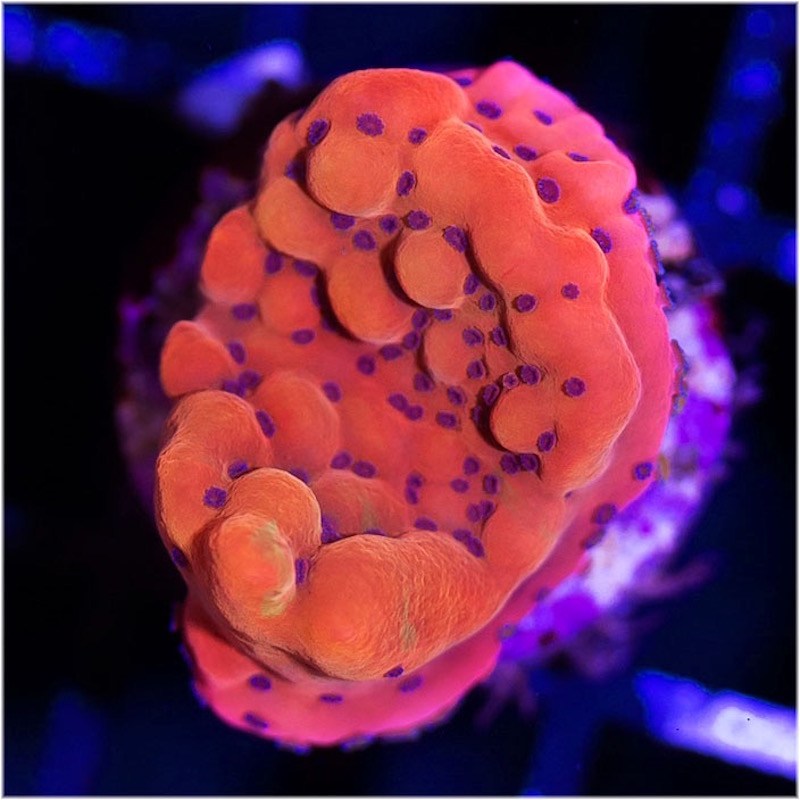
As I just mentioned, price does come into play, often times significantly in the frag market. I have now seen several sps frags sell for over $1000 and more for a tiny frag. Neither my stove nor my dishwasher, both of which I just replaced, sold for this much and they both are much more essential to the happiness in my home than is a coral frag.
I realize that many of the coral farmers search high and low to find the most colorful corals and then grow them out and eventually start farming them, and as a result demand for these beautiful corals is quite high. But I also realize that a lot of this demand now is because some who buy them only do so to grow them out themselves so that can frag them and then make a profit as well.
This is capitalism and I am all for that However, I worry that because of the prices some are willing to pay, the price for everything goes up and as a result it keeps some people out of the hobby and eventually this will have a negative impact. I know no one forces anyone to buy something, especially a coral frag.
And I also appreciate what the farmers go through to constantly bring us more and more beautiful corals. So all I am suggesting is that we show some restraint when bidding up the prices of frags, lest we price the entire hobby to the point where fewer and fewer of us can afford it. So again, it is my suggestion that if possible wait until the price of the multidimensional rainbow whatever comes down a bit before purchasing it.
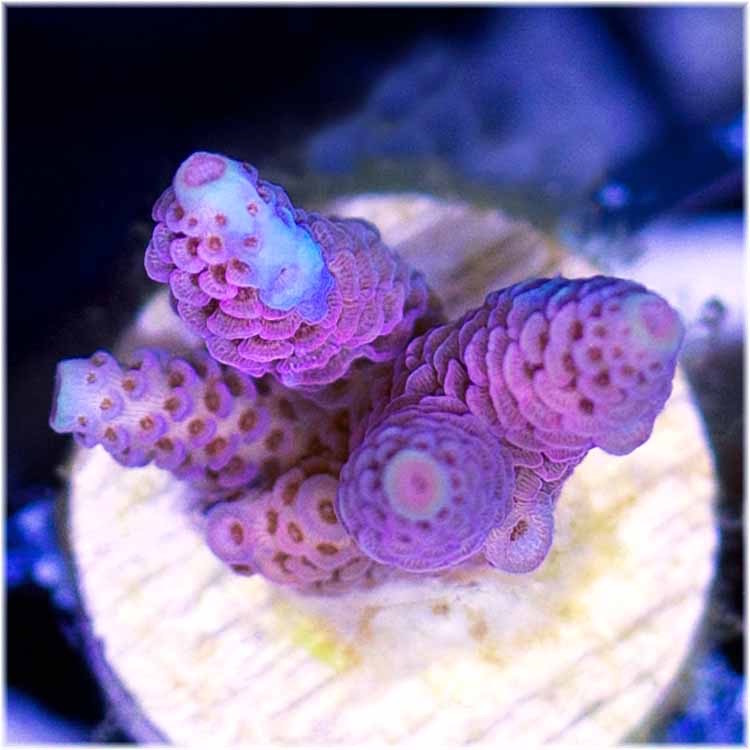
And when I say multidimensional whatever, I am not too far off in the names I am seeing for many corals out there. I have written a couple of pieces on the names of corals, yet I am amazed that we have not run out of names for them yet. More amazing is that some of the vendors I know know the name for every coral they have.
I must be getting old, I know some of you will say I am old, as I’m lucky I remember the names of the people I meet. But as with color, a named coral sells for more than an unnamed one. I understand sales and marketing, having been involved in both for over 30 years, but I cannot understand how the same coral coming from different vendors can have multiple names and with them varying prices.
I know there is no real standard, but there should be. Also as I mentioned above, the same coral can look significantly different in different tanks under different lights. In a perfect world before buying a coral we could see it under whatever lights the vendor chooses, but we could also see it under sunlight.
I know this is not the best light for seeing the coloration of the corals we like, but it is the only standard I can think of that cannot be manipulated and is the same everywhere. If this became the standard my hope is it would go a long way toward helping the names be the same for the same coral.
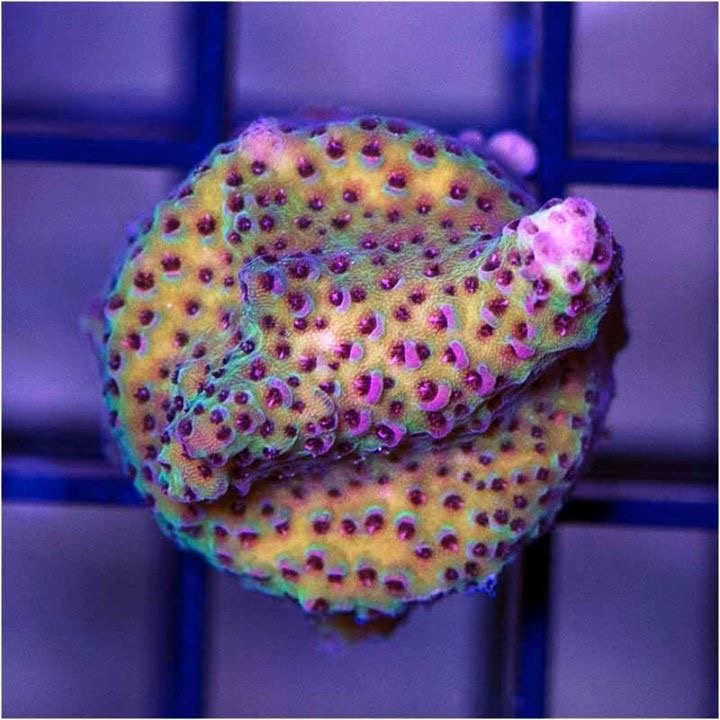
While all of the above have a significant role in the frag business, to me how the vendor mounts the the frags and how long they have been mounted is just as significant. While most mount the frags the same way, base glued to the bottom, their choice of mount, whether the frag is encrusted or not and how firmly the frag I attached are all important factors to me.
While most use the typical ceramic frag plug, others may use new acrylic or other pugs of some other material. The choice may seem trivial, but to me the goal of getting a frag on a plug is being able to mount it in my tank. Unfortunately, some of the newer plugs are very difficult to cut.

That is it is not easy to cut the base from the stem, as a result unless you have a handy hole in the rock they are difficult to mount so that they will not come lose before the frag encrusts the rock. More and more I also try to get frags that have encrusted on the plug.
These frags have a head start over frags that have just been recently glued to the plug in that a lot of sps need to put down tissue and encrust before they start to grow upward and outward. Also frags that have encrusted show that they do well in captivity versus frags that were just snipped off a recently acquired colony glued down and sold immediately. So take this into consideration when getting frags.
Speaking of getting frags, shipping is still the biggest logistical problem when it comes to moving frags or any livestock for the matter. Considering how many boxes one large carrier has lost or delayed of mine, where no one will take responsibility or pay a claim, it is a wonder how they stay in business. Having said that the shipper of frags can take some precautions to try and reduce the likelihood of the frags dying even when they are delayed.

First the frags should be shipped in an adequate amount of water. I know water is weight and weight adds to freight, but when you are paying hundreds of dollars for frags an extra $10 0r $20 for shipping is worth it. Adequate water is also crucial during hot and cold times of the year as it can help insulate some against major temperature swings.
Also adequate means to cool or heat the box should be provided and this may sound simple, but the shipping box itself should be thoroughly insulated. I once received an uninsulated box of frags in the dead of winter in an uninsulated box with a single heat pack. When the ‘fragsicles‘ arrived and I called the shipper he did not want honor his live arrival guarantee, because they sat on my porch.

Obviously they did not freeze solid in 20 minutes, but he did not replace them. Needless to say this bad behavior was not limited to me and he was out of business in a short time. In addition to trying to keep the temperature stable a good shipper can also take a few other precautions when the shipment is prepared.
The corals should be exposed to air for as little time as possible prior to shipping and even better packed underwater. Limiting air exposure reduces the likelihood of the corals producing excess mucous which can suffocate them in their little bag. In addition, some carbon on the bottom of the bag can help if they do produce something toxic.
Lastly, since many drivers treat these boxes like Jim Carrey did, the frags should be mounted with some type of protective cone around them to keep them from being broken during the process with the frags then being suspended upside down in the bag. Lastly, it really would be nice if all shippers some how labeled what frag is in each bag, either on the bags themselves or via some kind of labeling.

Unfortunately, most ½” frags look pretty similar, so unless they label what is what, it is very difficult to tell exactly what you have gotten if you get in a bunch of frags in one batch. This may all sound tedious and time consuming, but again considering the cost of this precious cargo it is well worth the time and effort.
Getting and shipping frags is now a big business and is undoubtedly adding to the joy that many of us get from the hobby. Every year it seems to be becoming a bigger and bigger piece of the hobby and it is where I get a lot of the rare corals I now keep. I just received a couple of boxes from Julian of Elegant Corals and Rey of Pirates Reef, and since I had not seen their corals in person I did not know what to expect when I opened their boxes.
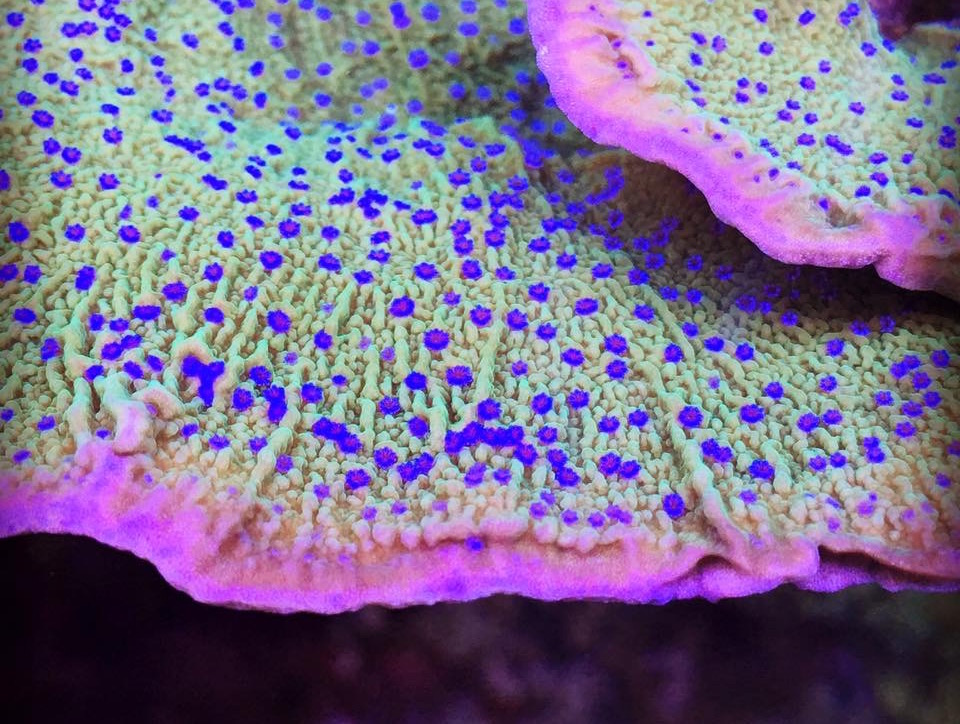
I must admit they exceeded my expectations as to me opening a box of frags is now the closest I get to the feeling I used to have on Christmas morning when I opened up an unknown package. I feel lucky that I still get excited when I open up boxes like these as it keeps me excited about the hobby. Now if I could just get as excited about clearing space in my tanks so I can keep up with the incredible amount of frags that are now out there. I really don’t have room for a 1200-gallon tank again.


